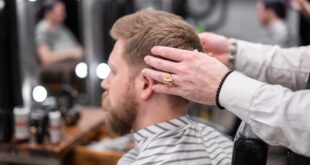The purpose of a hair transplant is to make you look naturally beautiful and young. Skyclinic has reviewed the procedure that a patient goes through. This highlights the role that the inter-professional team plays in the procedure of a hair transplant.
Suggestions to Follow Before Hair Transplantation:
While discussing the procedure with the patient, the Skyclinic hair transplant consultant should identify a qualified patient. Moreover, if a patient is not suitable for the HT, they should be informed right away.
To identify the patients, Skyclinic suggests you keep a check of the following:
1. The history of hair loss:
The symptoms linked with it such as fever, pruritus, scaling, erythema, rash. This suggests problems that could be the factors, i.e., frontal alopecia and lichen)
2. Medical History:
There happen to be various diseases and skin conditions that are to be kept in mind. Thyroid disease, diabetes mellitus, metabolic syndrome, autoimmune-related conditions, systemic infections (i.e., HIV, tuberculosis, syphilis), skin conditions (i.e., vitiligo, pemphigus), malnutrition, vitamin and mineral (iron) deficiency
3. Medications:
It is possible that various medications taken have affected the growth of hair. (i.e., propranolol, amphetamines). Moreover, medicines such as antiplatelet and anticoagulation should be kept on hold to avoid excessive bleeding.
4. Psychiatric History:
It should be kept in mind stress, anxiety, eating disorders, trichotillomania, emotional trauma, and body dysmorphic disorder are issues faced by patients. The consultant should always say no to such patients.
5. Physical Exam:
Always conduct a physical exam of the patient. Localized, scarring, or inflammatory hair loss suggests a diagnosis other than androgenic alopecia. A positive hair pull test (which should be negative in androgenic alopecia) would also point to a different diagnosis at Skyclinic.
To rule out an inflammatory or viral cause of hair loss, a scalp biopsy or KOH preparations may be necessary. If hyperandrogenemia is suspected, women should be tested for hormonal problems. They are considering all the discussion done. The consultant needs to refer the patient to a proper physician or specialist. This would help them get their issues resolved as per the requirement.
The Outcomes of Our Hair Transplant:
Even the best procedure done could not ultimately provide you with the desired result. The only best result is what suits your health and the capacity of your hair growth. It is not a deal to set unrealistic expectations from a transplant. However, other than high expectation, there are other factors that also lead to a lower density than desired:
Grafts are not being able to grow because most hair transplants should achieve greater than 90% successful growth of grafts. Possible causes of poor growth include technical considerations such as:
- Excessive transaction while harvesting
- transection at graft preparation
- The graft cooling procedure is done in an insufficient manner
- Grafts getting desiccated during the procedure
- Trauma to grafts during insertion
It does not matter how experienced a surgeon is at Skyclinic. These factors are the basic cause of complications during the procedure. A survey conducted shows that this phenomenon shows up only in about 6% of cases. Even then, the thinning hair formed in teloses is grown back to antigen in several years.
Final Verdict:
The issues occurring in procedures are normal, and in some cases, the hair does not grow back. Therefore, Skyclinic has the best-designed guidelines. To go for a transplant, keep in mind that you are going through a delicate procedure and always clear out all your doubts.
 HammBurg Be informed with latest news, reviews, entertainment, lifestyle tips, and much more.
HammBurg Be informed with latest news, reviews, entertainment, lifestyle tips, and much more.




